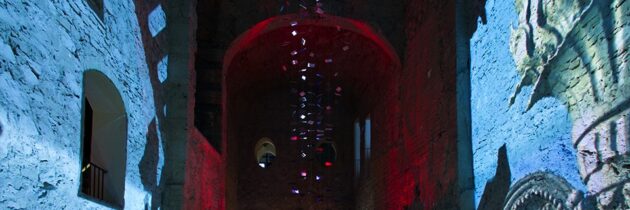MAGMA Follonica: a museum that combines archeology, manufacturing and multimedia technologies
With the predominance of digital media, we can lose sight of the function of museums to effectively and efficiently render the world of work, as it was defined in the 19th century, and help us understand where we come from and who we were prior to these modern times.
Take, for example, Follonica, a city in the province of Grosseto, an area that has been, since the time of the Etruscans, an important center for metalworking, due to the nearness of metalliferous hills. Mining activity has greatly influenced the working life and the culture of the area. This history was given further impetus in 1834, when Leopold II of Tuscany chose it as the location for the Royal and Imperial Foundries and brought metalworking into the modern age from its ancient roots. He created a village around the foundries with homes and the necessary services for those who relocated to Follonica for work. The iron plant included one of the most advanced blast furnaces of the time.
On 29 June 2013, the structure opened to the public with a new purpose, as the home of MAGMA. The museum’s objective is to preserve the technological, artistic and sociological history of the Follonica workshops and the region in which they developed.
MAGMA is the result of planning conducted by a team led by Barbara Catalani, architect, Marco Del Francia, designer and exhibition director, Tiziano Arrigoni, historian, with consulting provided by Claudio Casini and Marica Pizzetti and the supervision of Miria Magnolfi, director of Biblioteca della Ghisa. The interactive and multimedia elements were developed by Asteria Multimedia.
The exhibition space extends over three floors of the building and each floor is dedicated to a specific subject. The tall, narrow central area, formerly the site of the blast furnace, is perhaps the most impressive part of the museum.
A large installation, consisting of a cascade of thin metal sheets, recreates the shape and size of the blast furnace. The sheets were made of materials that recall the iron processing phases, suggested by colors such as the red of the flames to the transparency of the smoke. The window that illuminates the installation is periodically covered and lights are projected on the walls revealing shadows of workers, plays of light that recall the metal casting process. The effect is amplified by the accompanying audio. The installation is able to convey through its set design the art of forging iron.
The first floor is dedicated to the high level of specialization achieved by the Follonica plant in the art of forging iron. There are wooden models, created by hand and sculptures in their own right, of the molds were used to cast iron in the desired shape.
Alessandro Manetti and Carlo Reishammer, the two architects who designed the Church of Saint Leopold in Follonica are also paid homage in the museum. The church was the first Italian religious building to include cast iron elements, used in the pronaos, the rose windows in the façade and the apse.
The second floor is dedicated to the history of the foundries and the region and how they were key players in the iron industry.
A rare documentary, filmed in 1926, demonstrates the extraction techniques from the 1800s, faithfully reconstructed by the film’s directors. Another film relates the work of the coalmen, a job that has virtually disappeared, and its importance in the history of the Follonica foundries.
The museum provides a panorama of all phases of ironworking according to the casting techniques developed in the 6th century B.C. by the Etruscans.
The basement level guides the visitor through the complex technologies used by the plant for forging iron. The restoration of the plant succeeded in conveying the fascination of this manufacturing facility, where it is possible to immerse oneself in the steps of the process that led to the finished product.
Films, touch screens, simulations, video testimonies, audio reenactments, and statements from some of the last workers (the foundry closed in 1960) offer a vivid overview of the varied activities involved in ironworking, as well as the passion and craftsmanship necessary to carry on this ancient art with new technologies.
MAGMA is a new museum that seeks to convey the history of a region, while at the same time speaking in a universal language, reinterpreting a world that is not so distant from our own, but given the speed with which history evolves, seems to belong not to another century but to distant eras.
Museo delle Arti in Ghisa nella Maremma
Comprensorio ILVA
58022 Follonica (Grosseto)
Tel: +39 0566 59243/59004 Fax: +39 0566 41305/59382
info@magmafollonica.it www.magmafollonica.it
Visiting Hours
June-August: 5:30pm – 11:30pm
September – May: 3:30pm–7:30pm
Closed on Mondays
Guided tours and workshops booked in advance
Tel: +39 0566 59243/59004 prenotazioni@magmafollonica.it
Ticket prices
Full price: € 4
Discounted: € 3
(university students, over 65, groups of more than 15)
Schools: € 2
Free admission: Under 12, teachers with their classes, tour guides, disabled persons, Icom members, Mibac employees, Edumusei members, Coop members




 English
English Italian
Italian 






